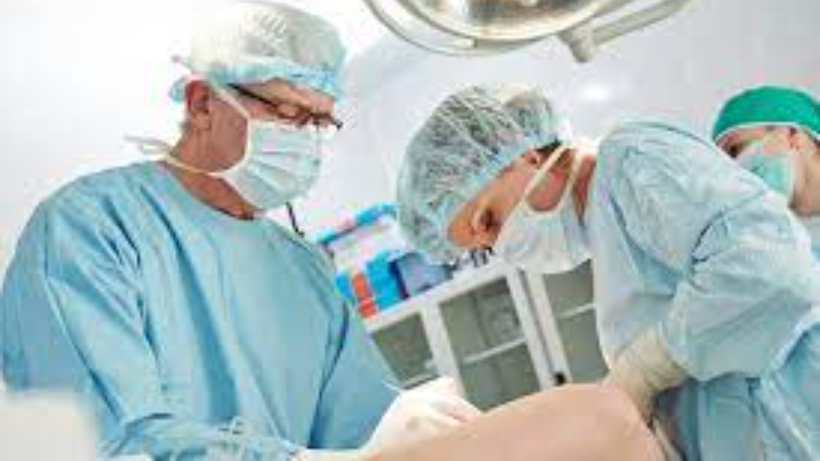
Enhancing Confidence: The Journey of Nipple Correction Surgery
26 Oct, 2023
 Healthtrip Team
Healthtrip TeamNipple Correction Surgery
Nipple correction surgery, also known as nipple revision or nipple reshaping, is a cosmetic or reconstructive procedure aimed at altering the appearance of the nipples. This surgical intervention addresses various concerns related to nipple size, shape, symmetry, or positioning. Individuals may seek nipple correction surgery for aesthetic reasons or due to functional and psychological considerations.
Transform Your Beauty, Boost Your Confidence
Find the right cosmetic procedure for your needs.

We specialize in a wide range of cosmetic procedures

The significance of nipple appearance extends beyond cosmetic concerns. Nipples play a crucial role in body image, self-esteem, and intimate relationships. For many individuals, the appearance of the nipples contributes to their overall sense of femininity, masculinity, or gender identity. Therefore, nipple correction surgery can have a profound impact on an individual's self-perception and well-being.
Why Nipple Correction Surgery?
A. Cosmetic Concerns
Cosmetic concerns often drive individuals to seek nipple correction surgery. Some may be dissatisfied with the size or shape of their nipples, finding them disproportionate or asymmetrical. Additionally, those with enlarged or elongated nipples may feel self-conscious about their appearance. Nipple correction surgery addresses these aesthetic concerns, enhancing the overall harmony and balance of the breasts.
B. Medical Reasons
Beyond cosmetic considerations, medical reasons may necessitate nipple correction surgery. Conditions such as inverted nipples, where the nipples are retracted into the breast, can cause functional issues, including difficulty breastfeeding. Nipple correction surgery can correct these anatomical irregularities, improving functionality and alleviating associated medical challenges.
Most popular procedures in India
Atrial septal defect
Upto 80% off
90% Rated
Satisfactory

Coronary Angiogram a
Upto 80% off
90% Rated
Satisfactory

Coronary Angiogram C
Upto 80% off
90% Rated
Satisfactory

Liver Transplant
Upto 80% off
90% Rated
Satisfactory

Total Hip Replacemen
Upto 80% off
90% Rated
Satisfactory

C. Psychological Impact
The psychological impact of nipple appearance should not be underestimated. Individuals experiencing dissatisfaction with their nipple aesthetics may suffer from diminished self-esteem and body image concerns. Nipple correction surgery can provide a psychological boost, empowering individuals to feel more confident and comfortable in their bodies. This positive psychological impact often extends to improved interpersonal relationships and overall mental well-being.
Before the Surgery
A. Consultation and Goal Setting
Before undergoing nipple correction surgery, a thorough consultation with a qualified plastic surgeon is essential. During this consultation, the surgeon will assess the individual's nipple anatomy, discuss the desired outcomes, and set realistic goals for the surgery. Open communication about expectations and potential results is crucial to ensure that the individual has a clear understanding of what the procedure can achieve.
B. Preoperative Instructions
In the days or weeks leading up to the surgery, the surgeon will provide specific preoperative instructions. These may include guidelines on medications to avoid, restrictions on smoking or alcohol consumption, and any necessary pre-surgical tests. Adhering to these instructions is vital for ensuring a safe and successful surgery, as they are designed to minimize potential risks and complications.
C. Lifestyle and Dietary Adjustments
Making certain lifestyle and dietary adjustments can contribute to a smoother surgical experience and recovery. These adjustments may include maintaining a healthy diet rich in nutrients, staying hydrated, and engaging in regular, moderate exercise. A surgeon may also advise on specific dietary supplements or vitamins that can aid in the healing process. Adopting a healthy lifestyle before surgery can enhance the body's ability to recover effectively.
D. Mental Preparation
Preparing mentally for nipple correction surgery is crucial for a positive overall experience. This involves understanding the reasons behind the decision to undergo the procedure, managing expectations, and addressing any anxieties or concerns. Some individuals find it helpful to speak with the surgeon about the surgical process and recovery to alleviate any preoperative stress. Mental preparation can contribute to a more relaxed mindset on the day of the surgery.
E. Arrange for Postoperative Care
Planning for postoperative care is essential to ensure a smooth recovery. This may involve arranging for someone to assist with daily tasks, transportation to and from the surgery center, and providing a supportive environment at home. Having a reliable support system in place is crucial during the initial days of recovery when individuals may need assistance with activities of daily living.
During the Surgery
A. Anesthesia Administration
Nipple correction surgery is typically performed under local anesthesia with sedation or general anesthesia, depending on the complexity of the procedure and the patient's preference. The choice of anesthesia will be discussed and determined during the preoperative consultation. Local anesthesia numbs the surgical area, while sedation or general anesthesia ensures the patient remains comfortable and unaware of the surgical process.
B. Incision and Correction Techniques
The surgeon will employ specific incision and correction techniques based on the individual's unique anatomical characteristics and desired outcomes. For inverted nipples, incisions may be made at the base of the nipple to release constricting tissues. In cases of nipple reduction or reshaping, incisions may be made around the areola or in discreet locations. Correction techniques involve reshaping the nipple and adjusting underlying tissues to achieve the desired size, projection, and symmetry.
C. Monitoring Vital Signs
Throughout the surgery, the medical team closely monitors the patient's vital signs, including heart rate, blood pressure, and oxygen levels. This continuous monitoring ensures the patient's safety and allows for prompt intervention if any deviations from normal parameters occur. A skilled anesthesia team oversees the administration of anesthesia and monitors the patient's well-being throughout the procedure.
D. Duration and Possible Complications
The duration of nipple correction surgery varies depending on the complexity of the procedure and the extent of correction needed. Generally, the surgery can take one to two hours.
After the Surgery
A. Recovery Room Stay
Following nipple correction surgery, patients are typically monitored in a recovery room. The duration of the recovery room stay may vary, but it allows medical professionals to observe the immediate postoperative recovery, ensure the patient is stable, and manage any initial discomfort. Once the medical team determines that the patient is recovering well, they may be released to go home.
B. Postoperative Care Instructions
- Wound Care: Proper wound care is crucial for optimal healing. Patients will receive detailed instructions on how to clean and care for the surgical site. This may involve gentle cleaning with mild soap and water, application of prescribed ointments, and keeping the area protected with dressings.
- Medications: Pain management and the prevention of infection are addressed through prescribed medications. Patients will receive instructions on pain relievers and, if necessary, antibiotics. Following the prescribed medication schedule is important for managing pain and minimizing the risk of infection.
- Activity Restrictions: Patients are typically advised to avoid strenuous activities and heavy lifting for a specified period. The duration of activity restrictions varies based on the extent of the surgery and individual healing rates. Compliance with these restrictions is crucial to prevent complications and promote proper healing.
C. Follow-up Appointments
Scheduled follow-up appointments with the plastic surgeon are essential for monitoring the healing progress and addressing any concerns. During these appointments, the surgeon may remove stitches if necessary, assess the surgical site, and provide further guidance on the recovery process. Open communication about any changes or issues experienced during recovery is encouraged during these appointments.
D. Resuming Normal Activities
The timeline for resuming normal activities varies among individuals and the specific details of their surgery. While light activities may be resumed relatively soon, more strenuous activities, such as intense exercise or heavy lifting, may need to be postponed for a longer period. The surgeon will provide personalized guidance on when it is safe to gradually resume normal daily activities.
Latest Advancements in Nipple Correction Surgery
A. Technological Innovations
Recent advancements in technology have significantly influenced the field of nipple correction surgery. The integration of advanced imaging techniques, such as 3D imaging and computer-assisted design (CAD), allows surgeons to plan procedures with unprecedented precision. This technology aids in visualizing the desired outcomes and tailoring surgical approaches to each patient's unique anatomy. Additionally, intraoperative technologies, such as laser systems, may be employed to enhance the precision of incisions and tissue modification, contributing to improved surgical outcomes.
B. Minimally Invasive Techniques
The trend toward minimally invasive procedures has extended to nipple correction surgery. Innovations in instrumentation and surgical techniques allow surgeons to achieve desired results with smaller incisions, leading to reduced scarring and quicker recovery times. Endoscopic approaches, involving the use of small cameras and specialized instruments, enable surgeons to perform certain nipple corrections with minimal disruption to surrounding tissues. Minimally invasive techniques contribute to a more comfortable postoperative experience for patients.
C. Improved Healing and Recovery
Advancements in materials and postoperative care protocols have contributed to improved healing and recovery following nipple correction surgery. The use of absorbable sutures and advanced wound closure techniques minimizes scarring and promotes faster healing. Additionally, the development of novel dressings and topical treatments may enhance wound healing and reduce the risk of complications. Surgeons may also leverage advancements in pain management strategies, including long-acting local anesthetics, to optimize patient comfort during the recovery period.
Tips for Preparing Yourself
- Consult reputable sources to understand the procedure.
- Schedule face-to-face consultations to assess their approach and view past work.
- Realistic Expectations:Communicate openly with the surgeon about achievable outcomes.
- Review case studies and testimonials to understand real-world results.
- Support System:Inform close family and friends about the decision for their support.
Risks and Complications
A. Infection
- Introduction of bacteria into the surgical site leading to an infection.
- Symptoms may include redness, swelling, pain, or discharge from the incision site.
- Antibiotics and proper wound care are essential for treatment and prevention.
B. Scarring
- Formation of scars at the incision site, which can vary in visibility and texture.
- Surgeons employ techniques to minimize scarring, but individual healing responses may differ.
- The location and size of incisions can influence the extent of scarring.
C. Changes in Sensation
- Temporary or permanent alterations in nipple sensation.
- Sensitivity may increase, decrease, or change in nature.
- Nerve damage during surgery can contribute to changes in sensation.
D. Hematoma
- Accumulation of blood outside blood vessels, forming a clot or bruise.
- Symptoms may include swelling, pain, and discoloration at the surgical site.
- Surgical drainage may be required to address a significant hematoma.
E. Revision Surgery
- The need for additional surgery to address unsatisfactory outcomes or complications.
- Revision surgery may be necessary for aesthetic adjustments or to correct functional issues.
- It involves a thorough assessment and collaboration with the surgeon to determine the appropriate course of action.
Nipple correction surgery is a safe and effective procedure for improving the appearance and function of inverted nipples. With careful planning and preparation, patients can achieve their desired results and improve their quality of life.
Wellness Treatment
Give yourself the time to relax
Lowest Prices Guaranteed!

Lowest Prices Guaranteed!




